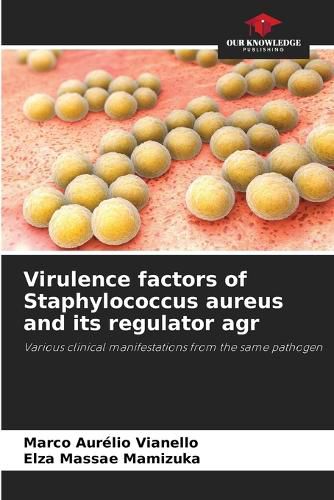Readings Newsletter
Become a Readings Member to make your shopping experience even easier.
Sign in or sign up for free!
You’re not far away from qualifying for FREE standard shipping within Australia
You’ve qualified for FREE standard shipping within Australia
The cart is loading…






Bacterial pathogens exhibit great versatility in causing harm to the human organism. There are therefore several virulence factors used by these microorganisms, enabling them to cause direct damage to the invaded organism, while at other times giving them the ability to evade the host's immune system. Staphylococcus aureus is a bacterial species with a considerable range of virulence factors, which are directly responsible for numerous clinical manifestations triggered by its invasion. Diseases resulting from the direct action of this microorganism, such as abscesses, surgical wound infections, pneumonia, or the action of its toxins such as toxic shock syndrome and food poisoning, demonstrate its great pathogenic arsenal. Because of these characteristics, it is essential for the clinician to know the tricks of this versatile pathogen in causing disease, as well as for the microbiologist to isolate them from the clinical specimens most related to their pathogenicity.
$9.00 standard shipping within Australia
FREE standard shipping within Australia for orders over $100.00
Express & International shipping calculated at checkout
Bacterial pathogens exhibit great versatility in causing harm to the human organism. There are therefore several virulence factors used by these microorganisms, enabling them to cause direct damage to the invaded organism, while at other times giving them the ability to evade the host's immune system. Staphylococcus aureus is a bacterial species with a considerable range of virulence factors, which are directly responsible for numerous clinical manifestations triggered by its invasion. Diseases resulting from the direct action of this microorganism, such as abscesses, surgical wound infections, pneumonia, or the action of its toxins such as toxic shock syndrome and food poisoning, demonstrate its great pathogenic arsenal. Because of these characteristics, it is essential for the clinician to know the tricks of this versatile pathogen in causing disease, as well as for the microbiologist to isolate them from the clinical specimens most related to their pathogenicity.